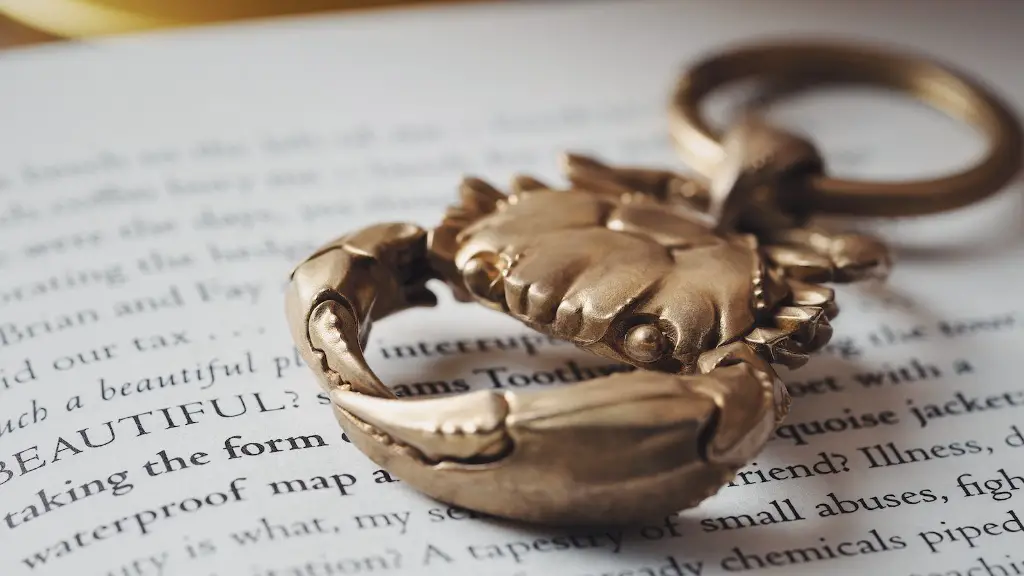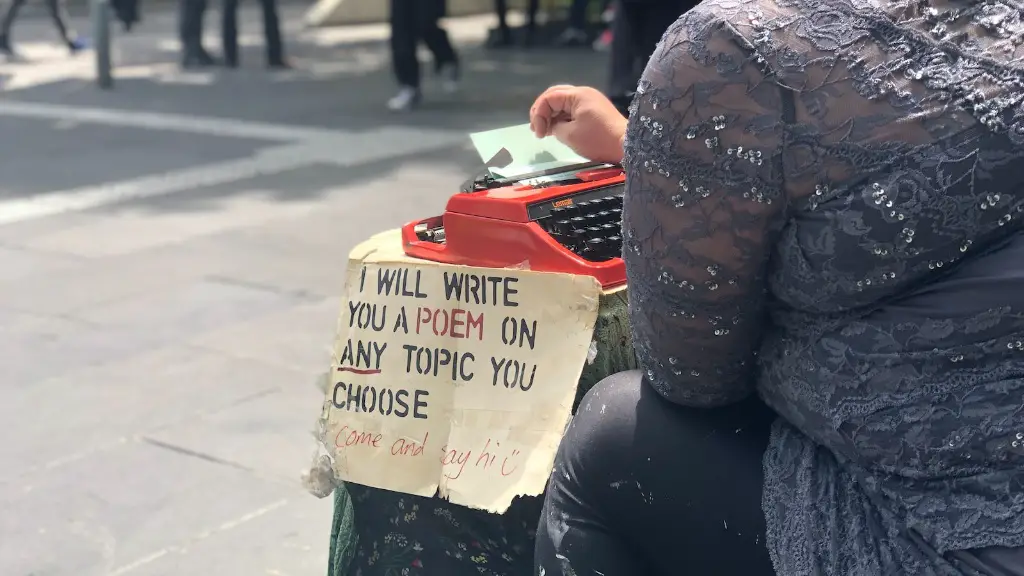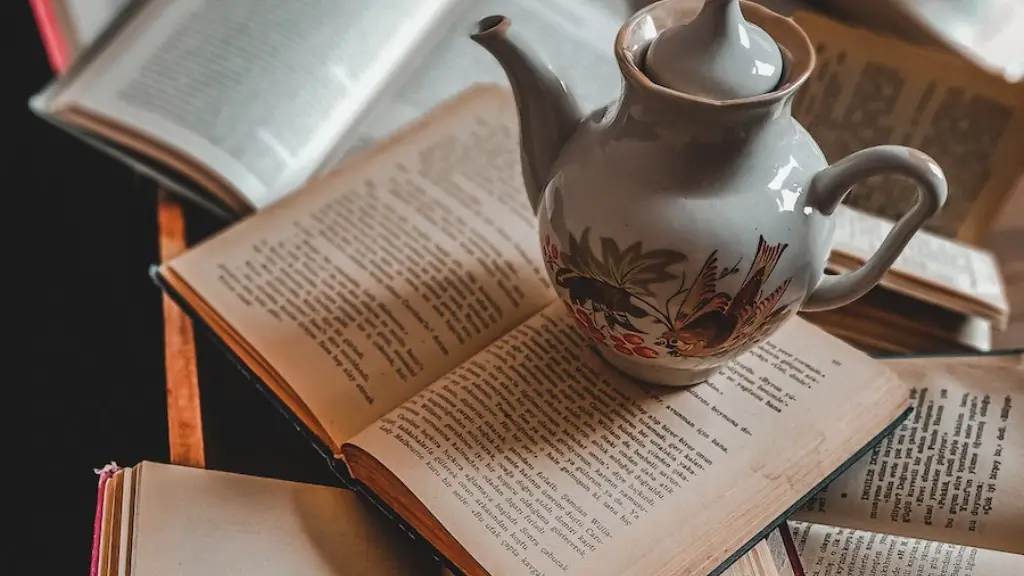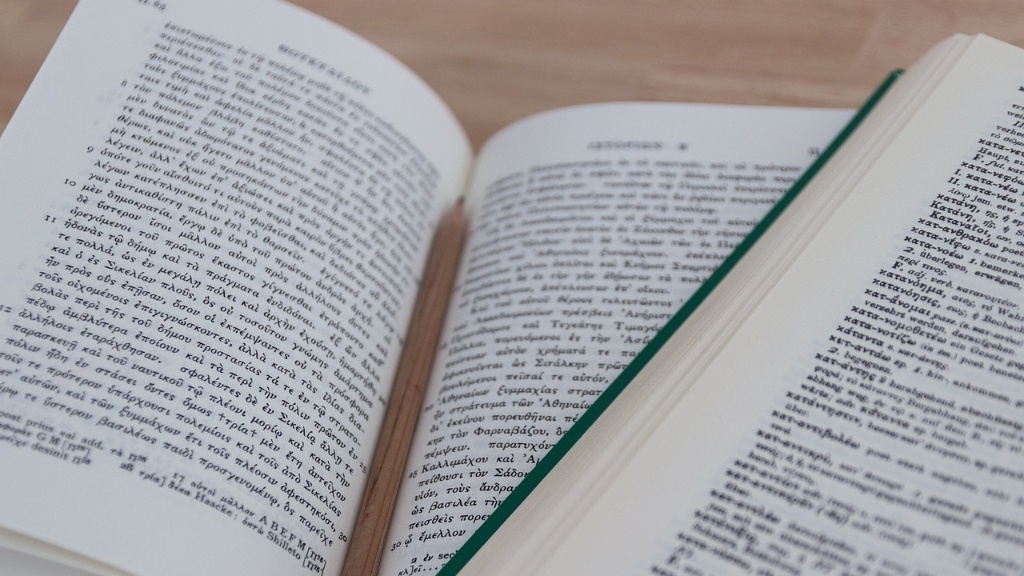Imagery is one of the most powerful tools available to poets, allowing them to evoke emotion and vivid images in the minds of their readers. It can be used as a tool to express a wide range of emotions and ideas, and to help create a connection between the reader and the poem.
To understand how imagery can be used in poetry it is important to understand what imagery is. Imagery is the use of words or phrases to create a mental image or to convey an emotion. It can be used to evoke a sense of smell, sight, touch, taste, or hearing. It can also be used to suggest a physical or emotional response in the reader, such as fear, joy, and anger.
One of the most important ways that imagery is used in poems is to create a vivid and powerful experience for the reader. Poets often use imagery to evoke strong emotions, as well as to give the poem a sense of life and vitality. Poets often use imagery to create a visual image in the reader’s mind, allowing the reader to visualize the poem in their own minds. By using imagery, the poem becomes more alive and realistic for the reader.
Imagery can also be used to create a mood or atmosphere within the poem. By describing the sights, smells, textures, and sounds of the poem’s environment, poets can communicate a feeling or emotion that resonates with the reader. For example, a poet might use imagery to create a feeling of peacefulness or calmness, or to create a feeling of dread or suspense.
By combining imagery with other poetic techniques, such as metaphor and simile, poets can add another level of depth and emotion to their poems. These techniques help to further express the ideas and emotions of the poem. For example, a poet might use a metaphor to compare two seemingly unrelated things, to create a more vivid image for the reader and to make a poem more interesting and meaningful.
In addition to evoking emotions, imagery can also be used to create a setting or to establish a theme. By incorporating details about the settings and the characters in a poem, poets can help to establish the mood and the tone, making the poem more relatable and real for the reader. Additionally, by using imagery to describe a certain situation or event, poets can help the reader to gain a deeper understanding of the poem.
Imagery is a powerful tool that can be used to evoke emotion, to create vivid images in the reader’s mind, and to communicate a message. By using imagery and other poetic techniques, poets can create powerful and meaningful poems that are sure to capture the hearts and minds of their readers.
Positive Effects of using Imagery in Poetry
The use of imagery in poetry can have a positive impact on the readers. By making the poem more relatable and real, the reader is more likely to connect with the poet on a deeper level. Poets can use imagery to evoke emotion in the reader, allowing them to feel a connection to the poem and to the poet. Additionally, the use of imagery can help to communicate a meaningful message in a subtle way, inviting the reader to explore the poem further.
The use of imagery in poetry can also be used to create an atmosphere within the poem. By describing the sights, sounds and smells of the poem’s environment, poets can create an immersive experience for the reader. This helps to make the poem seem more vivid and alive, as the reader can feel as if they are actually in the poem’s environment. In this way, the use of imagery can help to make the poem more engaging and enjoyable for the reader.
Finally, the use of imagery can help to express the poet’s ideas in a more powerful and meaningful way. By combining imagery with other poetic techniques, such as metaphor and simile, poets can create a unique and powerful experience for the reader that is sure to leave a lasting impression.
Negative Effects of using Imagery in Poetry
Although the use of imagery in poetry can have a positive impact on the reader, it can also have a negative effect. Images can be easily misunderstood, which can lead to confusion and misunderstanding of the poem’s intent. Additionally, images can be misinterpreted or misused, leading to an unfulfilled message in the poem.
The use of imagery can also be seen as a form of manipulation. Some people might perceive the use of imagery as a way to control the reader’s emotions, and to push them in a certain direction. This can lead to a feeling of mistrust between the reader and the poem, as they may feel as if they are being manipulated and not given a chance to form their own opinion.
Finally, the use of imagery in poetry can be seen as overly elaborate, or even distracting from the central message of the poem. By using too many images, or by using images that are not relevant to the poem, the poet can risk overwhelming the reader and detracting from the overall message.
Imagery: A Powerful Tool of Expression
Although the use of imagery in poetry can have a negative impact, it is ultimately a powerful tool of expression. By using imagery, poets can evoke emotion, create vivid images in the reader’s mind, and communicate a meaningful message in a subtle way. Through the use of imagery, poets can create powerful and meaningful poems that are sure to capture the hearts and minds of their readers.
The use of imagery in poetry can be a difficult and complex task, but it is also a rewarding and fulfilling experience. By challenging themselves to create powerful and meaningful imagery, poets can create something that is truly unique and special. In this way, the use of imagery in poetry can help to bring joy, insight, and emotion to the reader, and make the poem more memorable and meaningful.
Conclusion
Imagery is an incredibly powerful tool available to poets, allowing them to evoke emotion, create vivid images in the reader’s mind, and communicate a meaningful message. Although the use of imagery in poetry can have negative effects, it is ultimately a powerful tool of expression. By challenging themselves to create powerful and meaningful imagery, poets can create something that is truly unique and special, and make their poem more memorable and meaningful.




